#Red de Museos
Text
Exitosa Noche de los Museos en Jujuy
#Cultura #Turismo | Exitosa #NochedelosMuseos en #Jujuy
La 11º edición de la “Noche de los Museos“ se concretó durante la jornada del viernes 25 en diferentes espacios culturales de cada una de las cuatro regiones de Jujuy, en donde museos, salas y centros culturales públicos y privados, presentaron diferentes propuestas de manera gratuita para toda la comunidad.El secretario de cultura de la provincia, Luis Medina Zar, acompañado por las directoras…
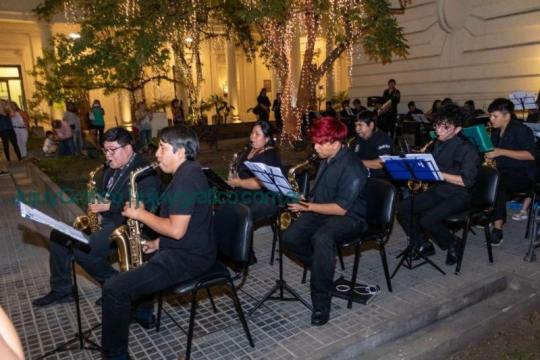
View On WordPress
#caja#Casa de Gobierno#Casa de las Letras#Casa Museo Macedonio Graz#Centro Cultural Culturarte#Centro de Arte Joven Andino#centros culturales#Espacios Culturales#Gisela Arias#Luis Medina Zar#Museo de Ciencias Naturales Carlos Darwin#Museo Posta de Hornillos#Museo Soto Avendaño#museos#Noche de los Museos#Patio de las Magnolias#Red de Museos#Valentina Millón
0 notes
Text
"Digital Impact", una exposición en la vanguardia europea en Barcelona
“Digital Impact”, an exhibition on the European avant-garde in Barcelona
TERESA FERNANDEZ HERRERA Prensa Especializada
Hasta el 27 de agosto podrá verse “Digital Impact”, exposición, que ya es una referencia del arte digital a nivel europeo, en quizá el edificio más vanguardista de Barcelona, el Museo del Diseño, en la remodelada Plaza de las Glorias Catalanas, que junto con el parque del…

View On WordPress
#ALBA G. CORRAL MERCURY#ANTONI AROLA#ARTE EN LA RED LA COLUMNA#Barcelona#CARTOGRAFIA CONEXION HUMANA#CATALUNYA#DIGITAL IMPACT#DISSENY HUB BARCELONA#DRIFT#ESPAÑA#EXPOSICIÓN#FUTURE DE LUXE#FUTURE YOU#INFINITY#lomasleido#MACHINE MEMOIRS#MERCURY#MIREIA ESCOBAR#MUCHO MÁS QUE ARTE#MUSEO DEL DISEÑO#OASIS#PASSENGER BSN#PEP SALAZAR#PLAZA DE LAS GLORIAS CATALANAS#QUAYOLA#REFERENCIA DEL ARTE DIGITAL#REFIK ANADOL#STORNS DE QUAYOLA#TERESA FERNANDEZ HERRERA MEJOR PERIODISTA ESPECIALIZADA DEL AÑO 2022#UNIVERSAL EVERITHING
2 notes
·
View notes
Text

Jacobo Borges
Meeting with Red Circle or Circle of Lunatics
1973
acrylic on canvas
Museo de Arte Moderno, Mexico City
1K notes
·
View notes
Text
Hoy ha comenzado «Lope estrena comedia» (#LopeEstrenaComedia), un proyecto del GRISO para reconstruir en redes sociales el estreno en 1613 de «La dama boba» de Lope de Vega
Hoy ha comenzado «Lope estrena comedia» (#LopeEstrenaComedia), un proyecto del GRISO para reconstruir en redes sociales el estreno en 1613 de «La dama boba» de Lope de Vega
Desde las 12:00 (hora española) de hoy, lunes 24 de octubre, ha comenzado a desarrollarse en redes sociales el proyecto de GRISO «Lope estrena comedia», que trata de reconstruir el estreno, en 1613, de La dama boba de Lope de Vega. El proyecto, coordinado por el Dr. Carlos Mata Induráin, Secretario del GRISO, cuenta con la participación de los alumnos de la Facultad de Filosofía y Letras de la…

View On WordPress
#Carlos Mata Induráin#Carmen Baleztena#Casa Museo Lope de Vega#Facultad de Filosofía y Letras de la Universidad de Navarra#Federico García Lorca#Gabriel Garza Algaba#Germán Beltramo Ballón#GRISO en la red#Grupo de Investigación Siglo de Oro (GRISO)#Irene Ortiz Palomo#Izaro Díaz Manso#Jerónima de Burgos#La dama boba#Lope de Vega#Lope estrena comedia#Margarita Xirgu#Pedro de Valdés#Redes sociales#Teatro del Siglo de Oro
1 note
·
View note
Text
Early 18th (and late 17th) century fashions are so under-utilized in vampire media and I think it's a damn shame.
I don't actually think I've ever seen a single image of a vampire character in an early 18th century suit. Hardly any movies set in that era either, and hardly any historical costumers who do it.
(Even my beloved gay pirate show set in 1717 takes nearly all of its 18th century looks from the second half of the century. Not enough appreciation for baroque fashion!!)
Yes I love late 18th century fashion as much as anyone, and 19th century formal suits are all very well and good, but if you want something that says old, dead, wealthy, and slightly dishevelled, then the 1690's-1730's are where it's at.
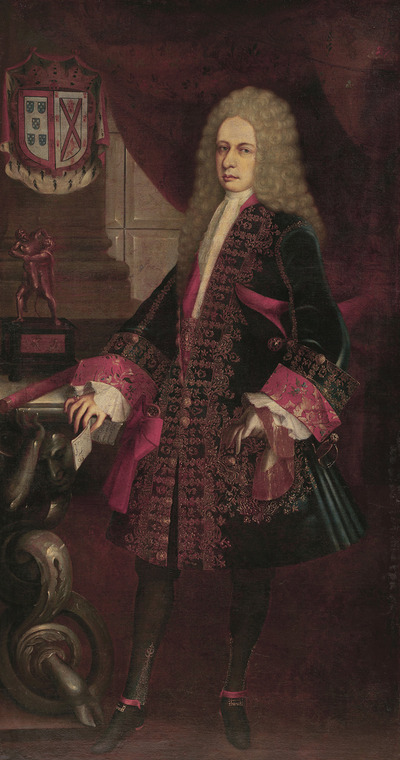
(Retrato del Virrey Alencastre Noroña y Silva, Duque de Linares, ca. 1711-1723.)
There was so much dark velvet, and so many little metallic buttons & buttonholes. Blood red linings were VERY fashionable in this era, no matter what the colour of the rest of the suit was.

(Johann Christoph Freiherr von Bartenstein by Martin van Meytens the Younger, 1730's.)
The slits on the front of the shirts are super low, they button only at the collar, and it's fashionable to leave most of the waistcoat unbuttoned so the shirt sticks out, as seen in the above portraits.

(Portrait of Anne Louis Goislard de Montsabert, Comte de Richbourg-le-Toureil, 1734.)
Waistcoats are very long, coats are very full, and the cuffs are huge. But the sleeves are on the shorter side to show off more of that shirt, and the ruffles if it has them! Creepy undead hands with long nails would sit so nicely under those ruffles.
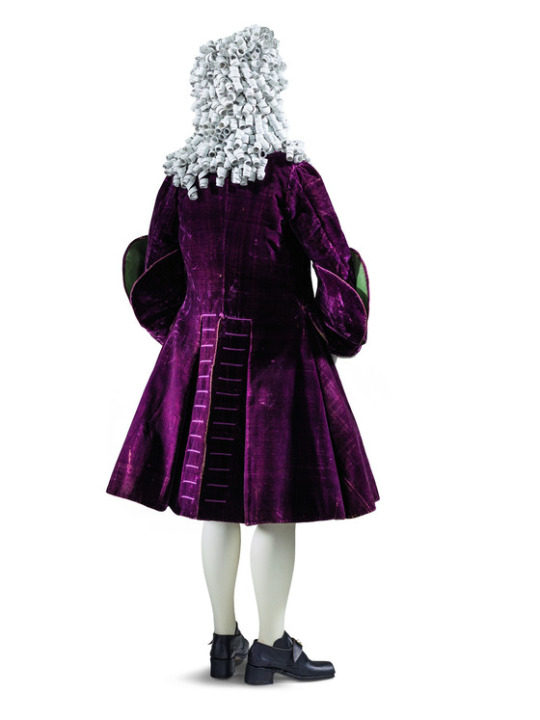
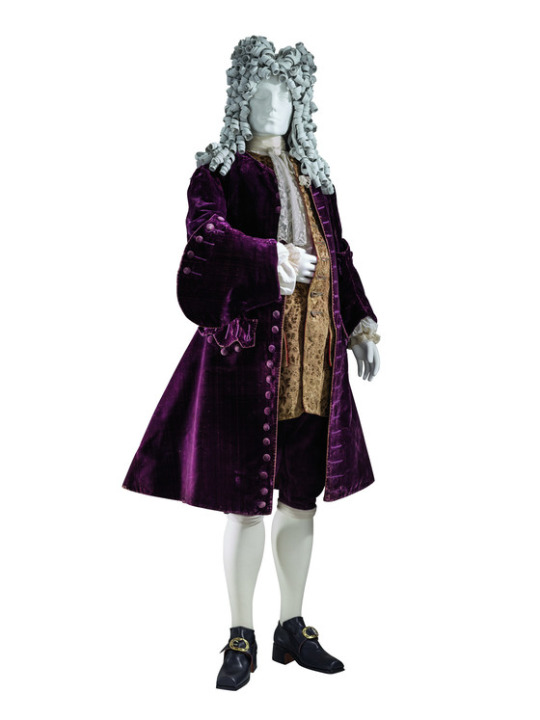
(1720's-30's, LACMA)
Embroidery designs are huge and chunky and often full of metallic threads, and the brocade designs even bigger.
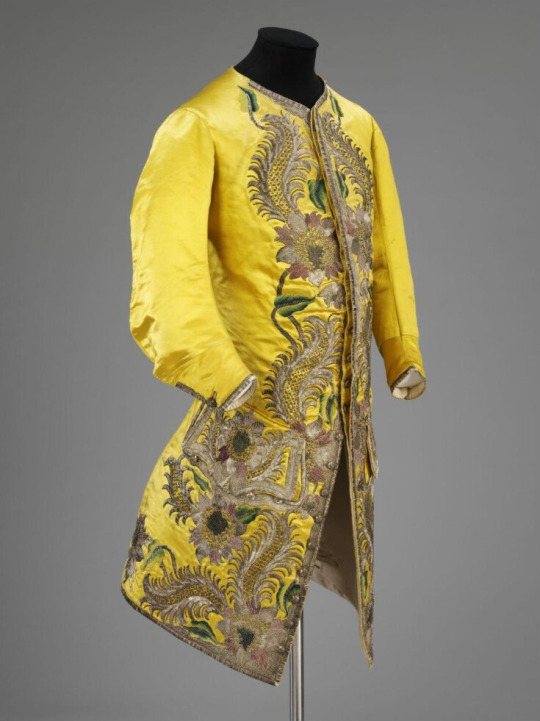
(1730's, V&A, metal and silk embroidery on silk satin.)
Sometimes they did this fun thing where the coat would have contrasting cuffs made from the same fabric as the waistcoat.
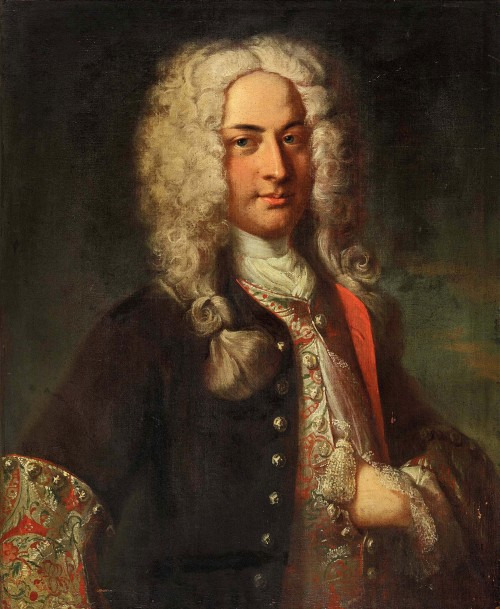
(Niklaus Sigmund Steiger by Johann Rudolf Huber, 1724.)
Tell me this look isn't positively made for vampires!
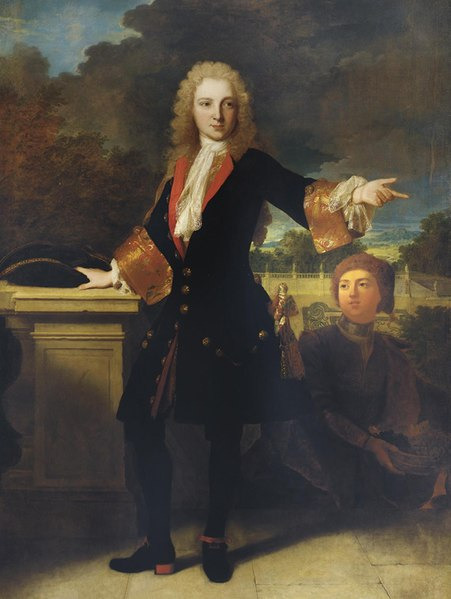
(Portrait of Jean-Baptiste de Roll-Montpellier, 1713.)
(Yeah I am cherry-picking mostly red and black examples for this post, and there are plenty of non-vampire-y looking images from this time, but you get the idea!)
And the wrappers (at-home robes) were also cut very large, and, if you could afford it, made with incredible brocades.
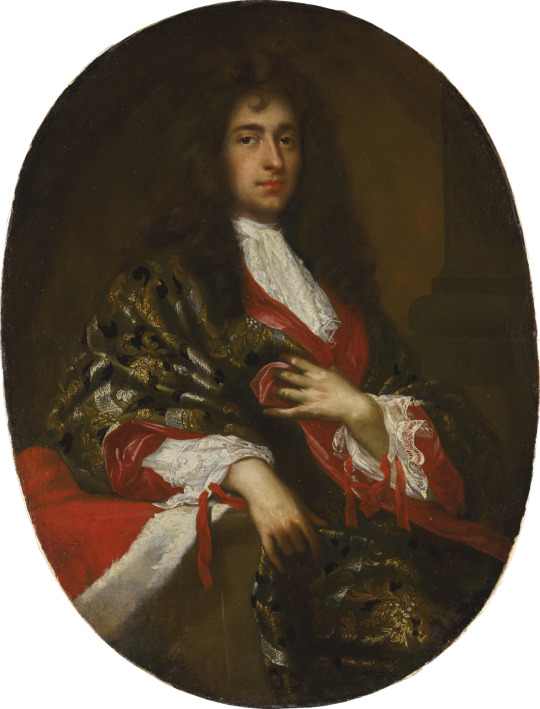
(Portrait of a nobleman by Giovanni Maria delle Piane, no date given but I'd guess maybe 1680's or 90's.)
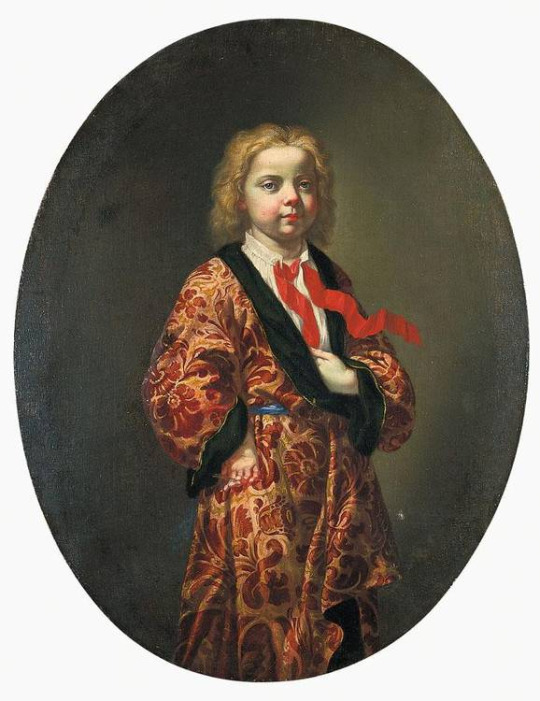
(Circle of Giovanni Maria delle Piane, no date given but I'd guess very late 17th or very early 18th century.)
Now that looks like a child who's been stuck at the same age for a hundred years if I ever saw one!
I don't know as much about the women's fashion from this era, but they had many equally large and elabourate things.

(1730's, Museo del Traje.)

(Don't believe The Met's shitty dating, this is a robe volante from probably the 1720's.)

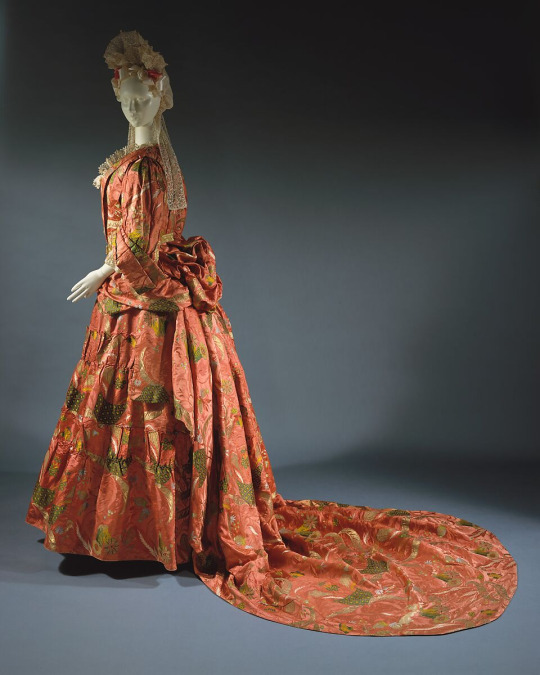
(Mantua, c. 1708, The Met. No idea why they had to be that specific when they get other things wrong by entire decades but ok.)

(Portrait of Duchess Colavit Piccolomini, 1690's.)

(Maria van Buttinga-van Berghuys by Hermannus Collenius, 1717.)
Sometimes they also had these cute little devil horn hair curls that came down on either side of the forehead.
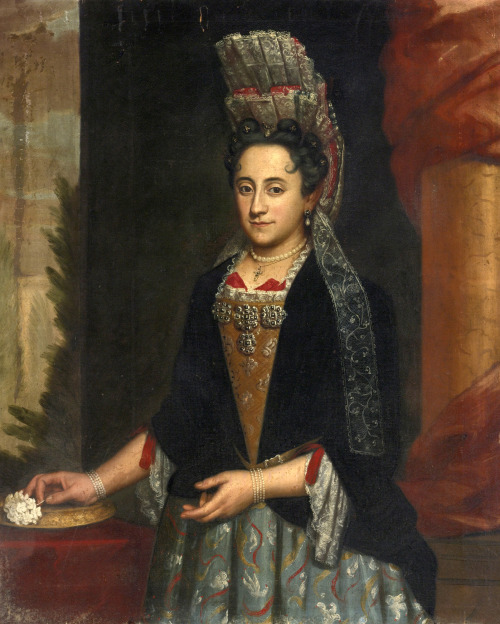
(Viago in drag Portrait of a lady, Italian School, c. 1690.)
Enough suave Victorian vampires, I want to see Baroque ones! With huge wigs and brocade coat cuffs so big they go past the elbow!
#long post#vampires#fashion#history#18th century#17th century#someday. SOMEDAY I will make a black/red/dark orange/metallic gold 1720's suit#I've got nearly all the materials I just need to:#1. Learn how to make early 18th century metallic thread buttons‚ preferably without having to buy the super expensive kind of thread#2. get a wig and style it appropriately
2K notes
·
View notes
Text

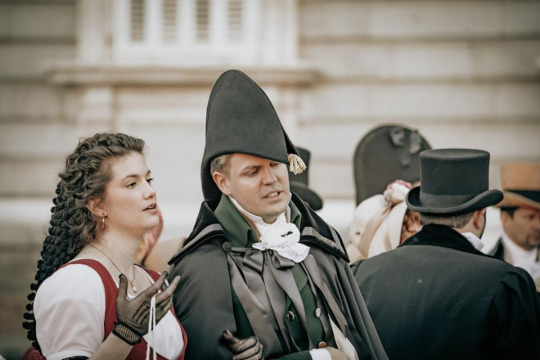
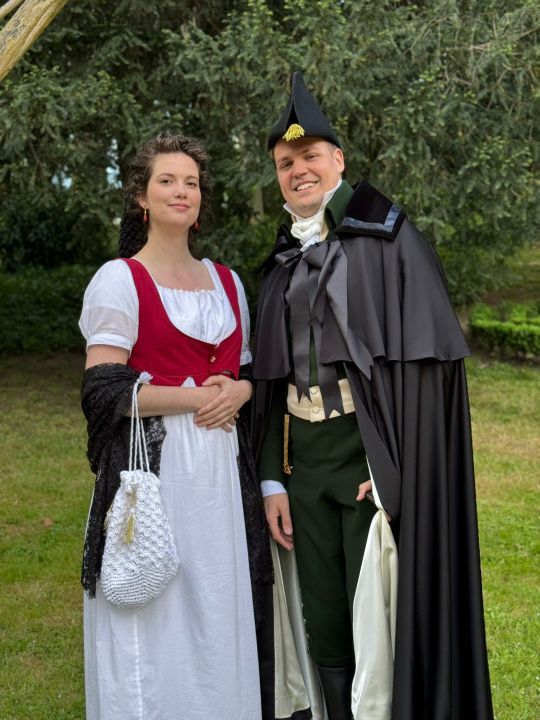
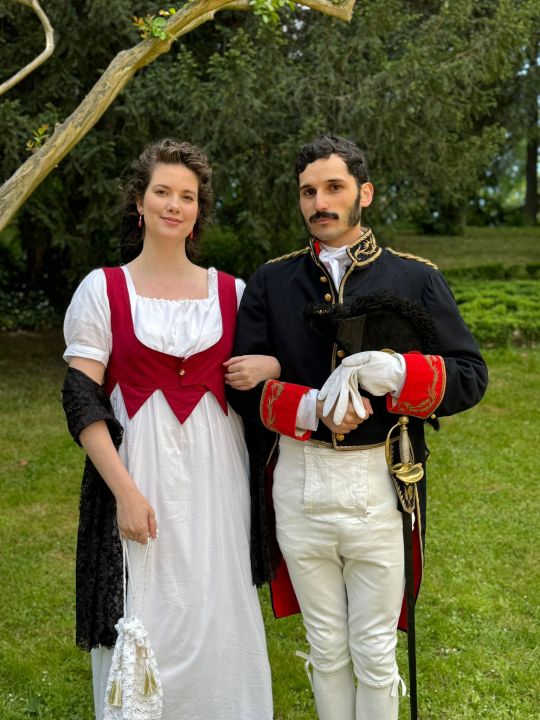
HELLO i'm alive, I just barely survived 9 days in Girona doing costumes for Assumpta's short film reels.....and immediately after we came back I had to do some frantic sewing in time for the week of events planned for the Dos de Mayo. I met up with some new friends I had met at the Museo de Traje two weeks or so earlier, and my Spanish has improved SO MUCH during my time here. I am so happy and having SO much fun. I based this spencer off of one Assumpta wears in Rossini, Rossini!, and had two days to make it. I did my hair how Teresa's looks in a snood in Company, but made a madroñera instead- it's a little lower class than Teresa would've worn, I think, but it was appropriate. (I want to make all of the costumes Assumpta wears in her films and make a pre-war Teresa wardrobe, though I'll be remaking this red spencer!)
Over the course of the week we walked through many parks, got to see the changing of the guard, we went to many palaces, and I got to participate in the Dos de Mayo parade and battle, which was insanely cool, and where the first two photos are taken! I also got to go to a wonderful ball and danced with all my friends, which I'll post photos of soon. Now that the events are over, I'm rereading Sharpe's Command bc I have my review in my drafts and want to revisit it.
#;ooc#;kiran goes to spain#(i had quite the crush on fernando who is in the bicorn hat)#(but he is gay LMFAOOOOOOOO just my goddamn luck)#(but he's a really amazing friend and my spanish has improved SO MUCH talking to him bc he doesnt speak any english)#(and he's patient and kind and very helpful and i've learned a lot)#(and a lot of my new friends have told me that A: my pronunciation is actually really good#(and B: that when I do speak I speak it like i've been speaking for years which is a HUGE shock to me and i am so so pleased)#(im going to be really sad when i go back home and loose this ability bc i have no one to practice it with)#(BUT i have so many photos and so much fun!!!!!!)
35 notes
·
View notes
Note
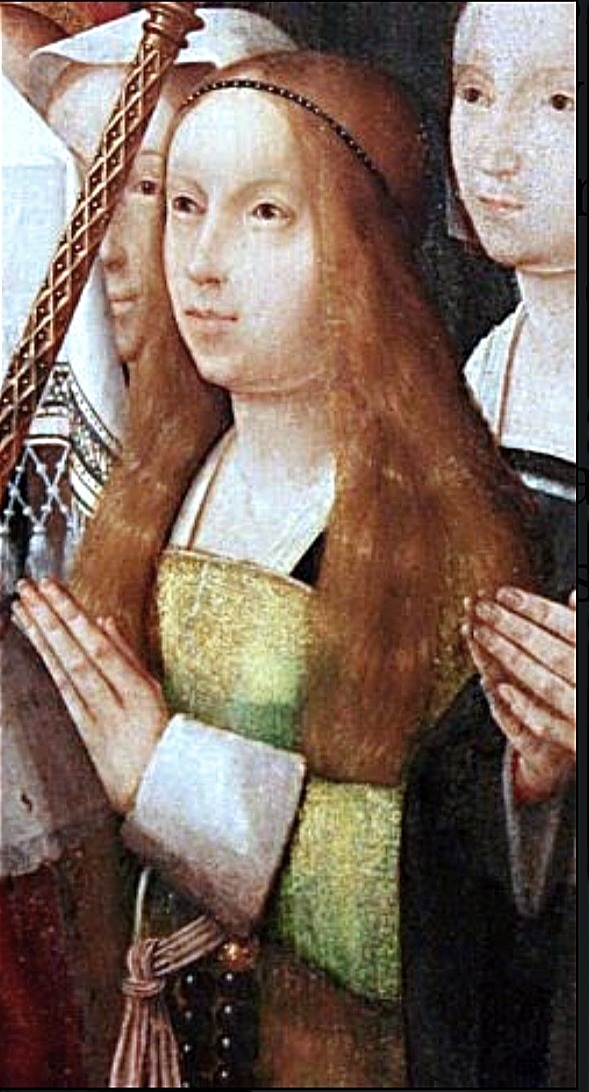
This is an imagen of María of Aragón, Queen of Portugal, from the Tríptico de Nuestra Señora de la Misericordia, Jan Provost, c. 1515.

I presume you wish to hear my thoughts about this painting, since no question was written.
Despite Jan Provoost never provenly leaving Low Countries, surprisingly not so small amount of his art are on Iberian peninsula.
Some of them provenly there since not long after their making, presumably comissioned directly. Not really sure how that comission process exactly worked.
Probably the best quality photos I could find of it are from this webpage.
Which also sheds bit of light about its history.
This painting is believed to be comissioned by Nuno Fernandes Cardoso and his wife Leonor Dias in 1511 when they had ordered construction of Chapel called la Capilla de San Juan de Letrán including the triptych for its altar. Thus it is presumed the painting was comissioned between years 1512-1515, not long after.
I have some issues regarding the royals within.
Number 1 all photos ignore the fifth presumed member of royal family-The girl in red dress on right.


(and fact two more figures are partially hiden behind the altar.)
It is believed by some that from left to right these are Manuel I, Maria of Aragon-his wife, Isabella of Portugal-his eldest daughter, Eleanor of Viseu(Dowager Queen of Portugal-wife of his predecessor) and Beatrice of Portugal-his younger daughter.
Not sure about costumes of everybody, but presumed daughters are dressed in Netherlandish outfits.
While i cannot rule out he was sent some sketches, the faces of these women are consistent with generic figures from other paintings by same artist. With designs which he was reusing.
Thus even if identification as royals is correct, it is not likely for it to be true likeness. (However in some cases, the artists were chosen because their already existing work reminded people of their loved ones. )
But the question on my mind seeing this triptych is-Where the heck are his sons? The painting is believed to be made in betwen 1512-1515.
By this point Manuel and Maria had 3 daughters and 5 boys. People were sexist back then, so idea King Manuel got depicted with wifey and daughters only is cute...but unrealistic.

While we have 7 male figures on left, one is pope(on right), one is old man, then there is monk(infante Henry was cardinal), and 4 more figures, not all of them even showing full face. They are not at front, but at back. Like is it symbolical...or were those boys not important?
Secondly, why would every royal except Manuel be depicted in clothes better fitted for somebody of lesser status?
Another depiction of the same royal family by Netherlandish artist Colijn de Coter is called Fons Vitae, and there despite outfits being netherlandish at least they were what we would expect from depiction of royalty.

Ermine, cloth of gold, crimson also popular with plenty of royals. But here only Manuel wears such suptuous robes.
(the other male with fur-that is not ermine, they specifically sewn those so that the tails appeared regularly.)

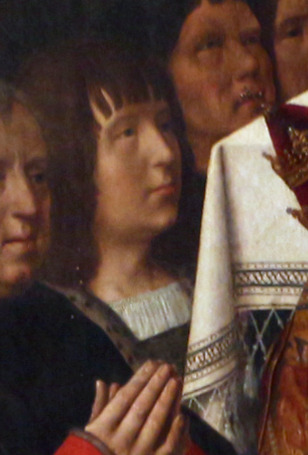
Thus i fear, it might be the case that Manuel is the sole royal depicted.
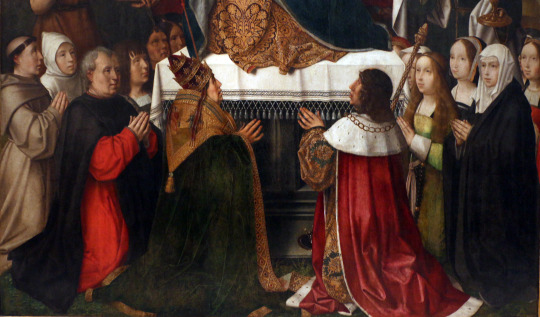
And that we have pope and king in central positions beneath Virgin Mary and people on sides will be the patrons and the family.
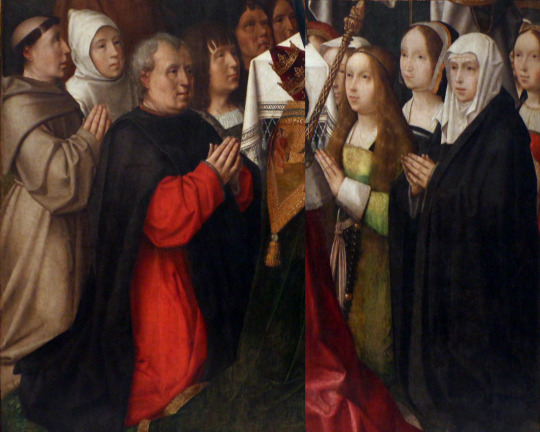
Possibly people who had the painting comissioned. Which would mean the grey-haired man in red and black is ment to represent Nuno Fernandes Cardoso(with his male relatives behind him).
And his wife Leonor Dias, is represented by either the woman in green or the woman in black with white headwear-which is also positioned probably the most at front(with the female relatives behind her.)
Thus in my opinion it could be the case of wrong identification, based upon proximity to the figure of the king and the fact the woman has golden hair (or at least i think she might have) and ribbon on upper part of forehead is bit similiar to how cofia the tranzado was worn with ribbon across forehead.
But even if i was wrong about this female not being ment to represent Maria, the face matches rest of generic saints by this artist. (for example the one on left)

Sorry. This is pretty face, but likely not Maria's.
10 notes
·
View notes
Photo

(vía El Hurgador [Arte en la Red]: Christian Seybold [Pintura])
Christian Seybold. "Autorretrato / Self Portrait", óleo sobre lienzo / oil on canvas, 53,5 x 44,5 cm., c.1720 Collection Esterházy, Museo de Bellas Artes (Budapest, Hungría / Hungary)
3 notes
·
View notes
Text

Sucre
Capital of Bolivia
Sucre is a city in the southern highlands of Bolivia. The whitewashed Casa de la Libertad, where Bolivia’s Declaration of Independence was signed, houses galleries related to the city's past as the national capital. Also on Plaza 25 de Mayo, the main square, is the Catedral Metropolitana, an ornate colonial church. Nearby is the Museo Universitario Charcas USFXCH, featuring religious artifacts and contemporary art.
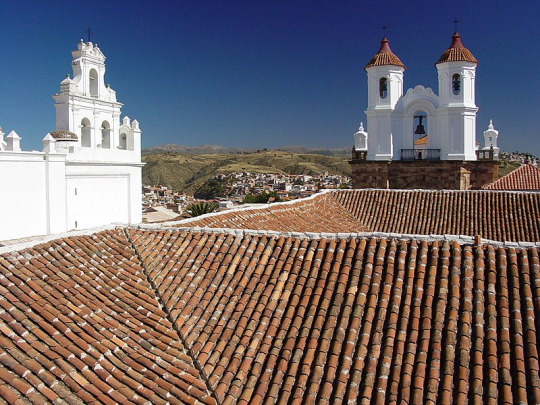
Tiled Roofs and Colonial Architecture - Sucre - Bolivia

The state government building (Sucre is the capital of Chuquisaca Department) was originally the Palace of Government of Bolivia when it was completed in 1896, but then the government moved to La Paz in 1898. On the roof flies the Bolivian flag of red, yellow, and green stripes which are repeated (except for blue instead of green) in the colored-glass window surrounding the Bolivian coat of arms at the top of the entrance arch. The flags flanking the entrance are the Wiphala flag of multi-colored squares representing native peoples of the Andes and the Chuquisaca Department flag of a Cross of Burgundy with a golden crown in the center. Sucre (elev. 2,810m/9,214ft) was founded by the Spanish in 1538 as Ciudad de la Plata de la Nueva Toledo (Silver City of New Toledo). It became the judicial, religious, and cultural center of the region. Bolivia achieved independence from Spain on 6 August 1825, the last country in Latin America to do so. In 1839 the city was declared the capital of Bolivia and renamed in honor of Antonio José de Sucre (1795-1830), a leader of the fight for independence who was a close friend of Simón Bolívar and served as the second president of Bolivia from the end of 1825 to 1828. (The administrative capital of Bolivia shifted to La Paz in 1898.) The Historic City of Sucre was declared a UNESCO World Heritage Site in 1991. On Google Earth: Prefectura de Chuquisaca 19° 2'53.52"S, 65°15'37.22"W
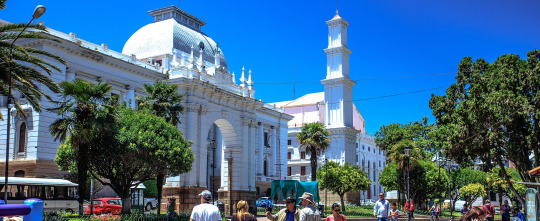
Sucre, Bolivia
Elevation: 2,790 m
Area code: (+591) 4
Climate: Cwb
Demonym(s): Capitalino (a); Sucrense
Department: Chuquisaca Department
Founded by: Pedro Anzures as "La Plata" in 1538
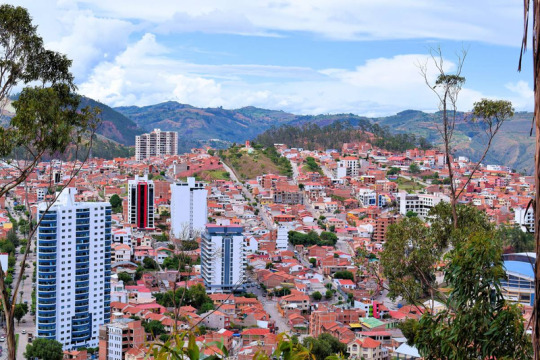
Sucre is divided into eight numbered districts: the first five of these are urban districts, while Districts 6, 7, and 8 are rural districts. Each is administered by a Sub-Mayor (Spanish: Subalcalde), appointed by the Mayor of Sucre. The rural districts include numerous rural communities outside the urban area.
Sucre - Wikipedia
8 notes
·
View notes
Text
"The Silver Lyre, is a stringed instrument dated approximately between 2600 BC and 2400 BC, belonging to Mesopotamian art.
It was found in 1929 during archaeological excavations carried out by the British archaeologist Leonard Woolley, in the ancient Sumerian city of Ur, located near the city of Tell el-Mukayyar, 16 km from the city of Nassiriya, in Iraq.
It has a height of 97.5 cm and a width of 5.5 cm. The body has a length of 103 cm and the upper bar has a length of 19 cm. It is made of wood, silver, mother-of-pearl, red limestone and lapis lazuli.
The lyre was found inside the tomb of Queen Puabi, belonging to the "royal tombs of Ur".
Now on display at the British Museum, London.

"La Lira Plateada", es un instrumento de cuerda datado aproximadamente entre los años 2600 a.C. y 2400 a.C., perteneciente al arte mesopotámico.
Fue hallada en el año 1929 durante las excavaciones arqueológicas llevadas a cabo por el arqueólogo británico Leonard Woolley, en la antigua ciudad sumeria de Ur, localizada cerca de la ciudad de Tell el-Mukayyar a 16 km de la ciudad de Nassiriya, en Irak.
Tiene una altura de 97, 5 cm y una anchura de 5,5 cm. El cuerpo presenta una longitud de 103 cm y la barra superior tiene una longitud de 19 cm. Está fabricada en madera, plata, nácar, piedra caliza roja y lapislázuli.
La lira fue encontrada dentro de la tumba de la reina Puabi, perteneciente a las "tumbas reales de Ur".
Ahora en exhibición en el Museo Británico, Londres.
2 notes
·
View notes
Text
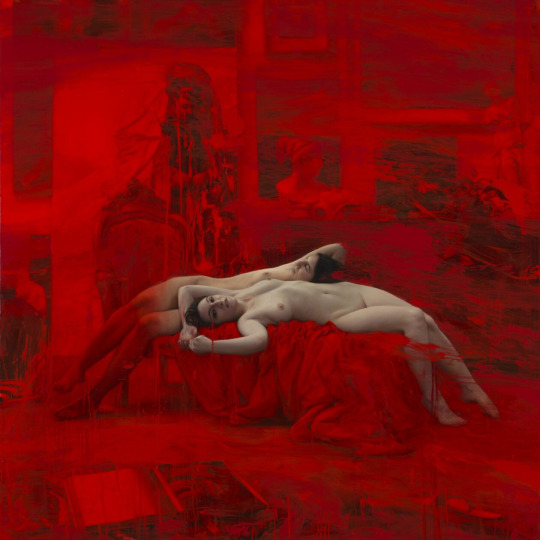
Vulcano. Red Studio Jordi Diaz Alamà, Granollers 1986,
Jordi Díaz Alamà, nacido en Granollers en 1986, es licenciado en Bellas Artes por la Universidad de Barcelona. Se perfeccionó estudiando arte clásico en escuelas internacionales, como la Academia de Arte de Florencia, donde adquirió conocimientos sobre las técnicas empleadas por los grandes artistas del siglo XIX. También tuvo el privilegio de formarse con maestros contemporáneos del realismo, como Guillermo Muñoz Vera, Odd Nerdrum y Antonio López. Aparte de su actividad artística personal, Alamà es también un consumado profesor que ha impartido clases en la Universitat de Belles Arts de Barcelona y fundó la Barcelona Academy of Art en 2013. A través de su enseñanza, se esfuerza por promover los métodos clásicos del arte como una valiosa herramienta que ayuda en la interpretación y representación de temas de hoy en día.
La obra personal de Alamà muestra un impresionante abanico de técnicas pictóricas que mezclan el realismo clásico con la estética contemporánea, libre de cualquier manierismo estilístico. Sus series #ClásicosDesollados y Red Studio, que combinan la pintura realista al óleo con toques abstractos, son exploraciones rompedoras de la intersección entre el arte clásico y el moderno. Su proyecto expositivo Si Volse a Retro, creado en colaboración con el escultor polaco Grzegorz Gwiazda, reinterpreta la Divina Comedia de Dante Alighieri y pone de relieve el compromiso del pintor con la figuración contemporánea.
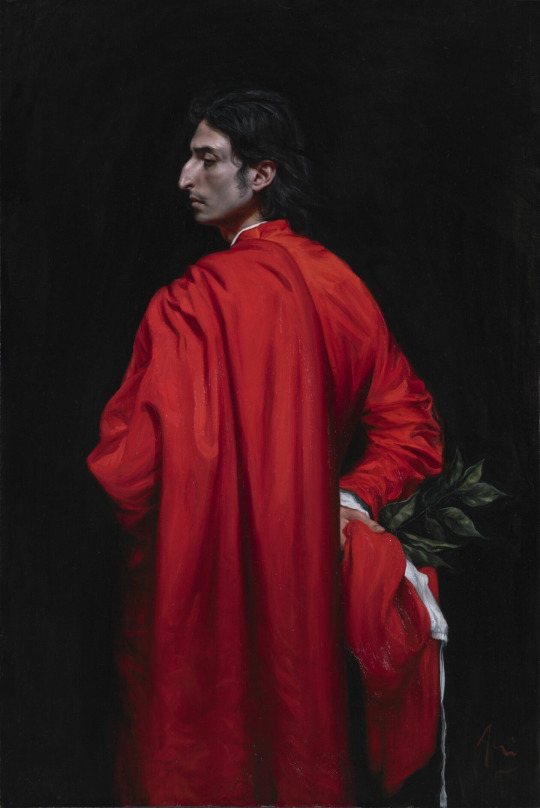
Alamà también ha trabajado en numerosos encargos, como la monumental obra La Creu del Jubileu para la Església dels Dolors de Vic. También fue seleccionado para retratar a la ganadora del Premio Cervantes 2022, Cristina Peri Rossi, y recientemente ha ilustrado portadas para varias novelas y álbumes musicales.
Las obras de Alamà figuran en las colecciones permanentes del MEAM y del Museo Can Framis de Barcelona, así como en colecciones privadas de Europa, Estados Unidos y Australia.
English:
Jordi Diaz Alamà, born in Granollers in 1986, is a graduate of Fine Arts from the University of Barcelona. He further improved his skills by studying classical art at international schools, including the Florence Academy of Art, where he gained insights into the techniques employed by the great artists of the 19th century. He also had the privilege of training under contemporary masters of realism, such as Guillermo Muñoz Vera, Odd Nerdrum, and Antonio López. Apart from his personal artistic pursuits, Alamà is also an accomplished teacher who has taught at the Universitat de Belles Arts de Barcelona and founded the Barcelona Academy of Art in 2013. Through his teaching, he endeavors to promote the classical methods of art as a valuable tool that aids in the interpretation and representation of modern-day themes.
Alamà’s personal artwork showcases an impressive array of pictorial techniques that blend classical realism with contemporary aesthetics, free from any stylistic mannerisms. His series #ClásicosDesollados and Red Studio, which combine realistic oil painting with abstract touches, are groundbreaking explorations of the intersection between classical and modern art. His exhibition project Si Volse a Retro, created in collaboration with the Polish sculptor Grzegorz Gwiazda, reinterprets Dante Alighieri’s Divine Comedy and highlights the painter’s commitment to contemporary figuration.
Alamà’s has also worked on numerous commissioned works, including the monumental piece La Creu del Jubileu for the Església dels Dolors de Vic. He was also selected to portray the 2022 Cervantes Prize winner, Cristina Peri Rossi, and has recently illustrated covers for several novels and musical albums.
Alamà’s works are featured in the permanent collections of the MEAM and Can Framis Museum in Barcelona, as well as private collections in Europe, the United States, and Australia.
6 notes
·
View notes
Text
La Noche de los Museos en todo Jujuy
#Cultura #Turismo #Provincia | #LaNochedelosMuseos en todo #Jujuy
Dieron a conocer detalles de la de la 11° Edición de la Noche de los Museos, que el próximo viernes tendrá apertura a las 18 horas en las 4 regiones que simultáneamente en las Yungas, Valles, Quebrada y Puna, estarán habilitados los museos, salas y espacios culturales de la Provincia, municipales e independientes para esta actividad.
El Secretario de Cultura, Luis Medina Zar junto a la…

View On WordPress
#Alejandra Gutiérrez#Casa de Piedra#Centro Culturales#Centro de Visitantes Ledesma#Cultura#Gustavo Méndez Pimentel#Luciano Córdoba#Luis Medina Zar#Museo Carlos Darwin#Museo Cauqueva de la Vida Campesina#Museo de la Memoria Visual “Ricardo Gabriel Dubin”#museos#Noche de los Museos#olegio Nacional N° 1 “Teodoro Sánchez de Bustamante”#Pinacoteca del Colegio de Escribanos de Jujuy#Puna#Quebrada#Red de Museos de Jujuy#San Salvador de Jujuy#Tres Cruces#Valles#Viviana Cortez#Yungas
0 notes
Text
ARTE EN LA RED: LA GIOCONDA O MONNA LISA
ART ON THE NETWORK: LA GIOCONDE OR MONNA LISA
EDGAR AWAD V. Columnista
El retrato de Lisa Gherardini, esposa de Francesco del Giocondo, más conocido como La Gioconda o Monna Lisa, es una obra pictórica del polímata renacentista italiano Leonardo da Vinci. Obra que fue adquirida por el rey Francisco I de Francia a comienzos del siglo XVI y desde entonces es propiedad del Estado francés. Se…

View On WordPress
#ACERCA DE LEONARDO#ARTE EN LA RED#DOS MONAS LISAS HECHAS POR LEONARDO#EDGAR AWAD COLUMNISTA DE LA AGENCIA MUNDIAL DE PRENSA#EL ROBO#ESPECIFICACIONES TECNICAS#LA GIOCONDA#LA MONA LISA#leonardo da vinci#lomasleido#MONNA LISA#MUCHAS MONAS LISAS#MUSEO DE LOUVRE#MUSEO DEL PRADO#PRECIO#SIMBOLISMO#VANDALISMO
0 notes
Text

¡Hola, buenos días, humanidad! 🌍 ¡Feliz jueves! 💪🌟🚀🏆🌈📈🌱🌞🎯🌺 Hoy os dejo la postal de Münster. En el noroeste de Alemania, es una ciudad situada en el estado de Renania del Norte-Westfalia que conjuga historia, cultura y modernidad. Conocida como la "ciudad de las bicicletas", gracias a su amplia red de carriles bici y cultura ciclista, Münster también presume de un encantador centro histórico medieval.
Entre sus principales atractivos se encuentran la Catedral de San Pablo, una impresionante obra maestra gótica, la Prinzipalmarkt, una plaza llena de casas con entramados de madera y el Ayuntamiento gótico, y los Jardines del Castillo, un oasis verde con invernaderos y el Museo de Arte Gráfico Pablo Picasso.
Münster, con su ambiente universitario y su rica oferta cultural, incluyendo más de 30 museos, es un destino ideal para aquellos que buscan una experiencia completa.
Para tener en cuenta...
Al final del día, las personas adecuadas luchan por ti. Aparecen en tu vida. Se preocupan no solo cuando es fácil, sino también cuando la vida se torna difícil, caótica y dolorosa. Las personas adecuadas asumen riesgos; te eligen con la misma seguridad con la que tú las eliges a ellas. Te entregan su corazón. Apuestan por ti. Tienen una fe inquebrantable en lo que compartes, una esperanza que rebosa en ellos. Ten el coraje de esperar a estas personas. No te conformes con amores a medias, no te conformes con alguien que no valore sostener tu corazón. Aquellos que se alejan de ti porque el momento no es adecuado simplemente no están dispuestos a invertir el tiempo necesario en ti. Que eso te sirva de aviso.
2 notes
·
View notes
Text
«Lope estrena comedia» (#LopeEstrenaComedia), un proyecto del GRISO para reconstruir en redes sociales el estreno en 1613 de «La dama boba» de Lope de Vega
«Lope estrena comedia» (#LopeEstrenaComedia), un proyecto del GRISO para reconstruir en redes sociales el estreno en 1613 de «La dama boba» de Lope de Vega
Desde GRISO, y con la participación de varios alumnos de la Facultad de Filosofía y Letras de la Universidad de Navarra, vamos a desarrollar el proyecto «Lope estrena comedia» para reconstruir el estreno, en 1613, de La dama boba de Lope de Vega. La iniciativa se va a desarrollar en redes sociales (Twitter, Facebook, Instagram y LinkedIn, con la etiqueta #LopeEstrenaComedia) los días 24-31 de…
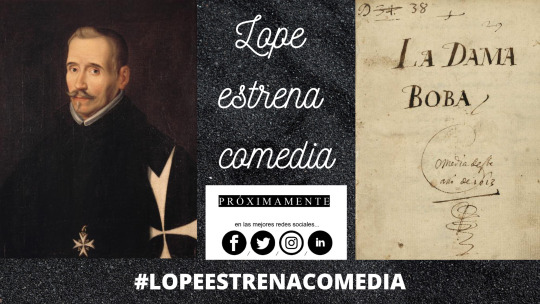
View On WordPress
#Carlos Mata Induráin#Carmen Baleztena#Casa Museo Lope de Vega#Facultad de Filosofía y Letras de la Universidad de Navarra#Federico García Lorca#Gabriel Garza Algaba#Germán Beltramo Ballón#GRISO en la red#Grupo de Investigación Siglo de Oro (GRISO)#Irene Ortiz Palomo#Izaro Díaz Manso#Jerónima de Burgos#La dama boba#Lope de Vega#Lope estrena comedia#Margarita Xirgu#Pedro de Valdés#Redes sociales#Teatro del Siglo de Oro
0 notes
Text

MWW Artwork of the Day (7/14/23)
Gustave Loiseau (French, 1865-1935)
Rue Clignancourt, Paris, on 14th July (c. 1925)
Oil on canvas, 61 x 50 cm.
Museo Nacional Thyssen-Bornemisza, Madrid
Flags liven up the scene and dot it with the colours blue, white and red. The crowd has invaded the boulevard, and the bright and clear light is that of a summer day in Paris. Loiseau conveys well the atmosphere of 14 July, a national holiday in France. On the blind side wall of a building situated on the right-hand side of the street and now called-rather surprisingly-"Grand Hôtel de Clignancourt, " were advertisements, which the artist transcribed and which vary according to the version. In fact, Gustave Loiseau showed a particular predilection for the view of the rue de Clignancourt, which he painted many times around 1925.
8 notes
·
View notes